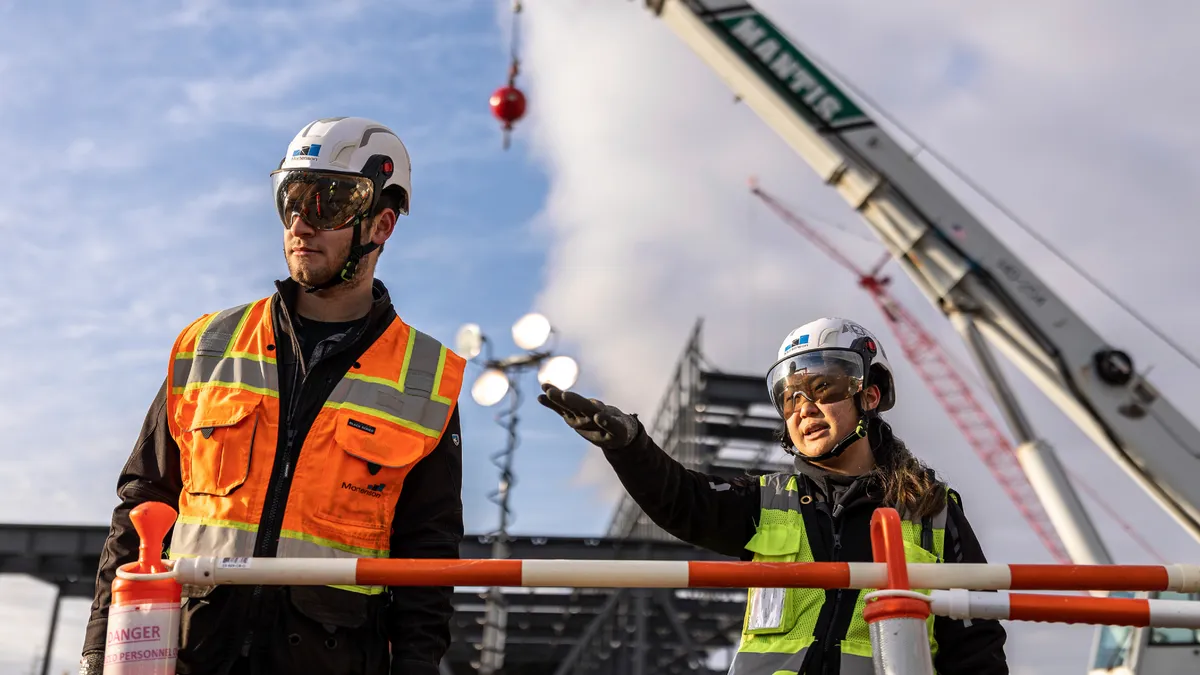The construction industry comes with inherent risks for craft professionals. Employers and project site leaders are constantly looking for the latest best safety practices to ensure the continued physical and mental wellness of all team members.
Enter the most recognizable element of any construction environment: the hard hat. For as long as most of us can remember, hard hats have been the standard choice for head protection in the construction industry. However, over the past five years or so helmets have made a strong entrance into this market. Which is best for your site? We will break it down for you.
Why proper head protection matters
Selecting and wearing proper personal protective equipment (PPE) – especially head protection – makes craft professionals safer and reduces liability risk. Each year, more than six million hard hats are sold. While traditional hard hats have been the standard for the last 100 years, they have not advanced much over the last 50 years. Research about traumatic brain injuries (TBIs) is bringing renewed awareness to the topic and developing new approaches to increase safety in the industry.
Traditional hard hat protection
Traditional hard hats offer top-of-head protection from objects falling overhead on a job site. The design includes a suspension system that absorbs some of the impacts and reduces the risk of objects penetrating the hat. They are designed to provide top-of-head protection and do not have chin straps. In cases of falls, the hard hat does not protect the head from the side, back or front impact, and in other scenarios, it may fall off leaving the worker unprotected.
Falls, slips and trips are the leading causes of death in fatal TBIs. A 2016 study in the American Journal of Industrial Medicine revealed from 2003-2010, 2,210 fatal TBIs occurred making up 25% of construction fatalities. The Bureau of Labor Statistics reported more than 5,000 construction fatalities between 2015 - 2019 with falls.
The rising popularity of safety helmets
Research illustrates the importance of full head protection, and newer safety helmets meet that need. Similar to climbing helmets, safety helmets are made to protect the top, sides, front and back of the head, are adjustable for a custom fit, have padding to cushion the head and include a chin strap. These helmets also contain clips allowing additional protective attachments like eye protection, face shields, neck guards, ear protection and more. The design better protects individuals who fall or those who may be hit by a moving object on an area other than the top of their head. As companies gain more insight into how safety helmets offer more protection and make the switch to safety helmets, the safer the construction industry is for everyone.
Finding the right protection for your job

Not all safety helmets are made the same but all hard hats and safety helmets must meet the ANSI Z89.1 standards under OSHA. There are two types and three classes of helmets that meet these standards. Selecting the right helmet for the job is essential to keeping workers safe.
Types:
- Type one reduces the force of impact only from blows to the top of the head.
- Type two reduces the force of impact from blows to both the top and the sides of the head.
Classes:
- Class G (General) hard hats are rated for 2,200 volts.
- Class E (Electrical) hard hats are rated for 20,000 volts
- Class C (Conductive) hard hats do not offer electrical protection
An investment in safety
Hard hats are more cost-effective than safety helmets. Hard hats start around $15-$30 and the cost of safety helmets is around $100+. While this poses a barrier, it is an upfront cost that can prevent long-term costs resulting from TBIs. By making an investment in safer helmets, companies are making a strong investment in employees.
Gaining industry momentum
From May 1-5, 2023, Construction Safety Week will continue its movement to spread safety awareness and make safety a priority in the industry. Companies can encourage their employees to participate and learn tips and tools on staying safe on jobsites. On Wednesday of Construction Safety Week, the topic Brain Matters will discuss the importance of proper head protection and the long-term impact on mental health. Resources can be found at www.constructionsafetyweek.com.
Prioritizing the health and wellness of craft professionals is important to industry leaders resulting in similar goals - for craft professionals to make it home safely from the job site. If you have not made the switch to a safety helmet, we encourage you to consider the potential benefits for your team members.






